Introduction: Best Foods to Feed your Gut
The gut — can go by so many names — GI tract, microbiome, bowels, belly, innards, just to name a few. The digestive system is one of the most important in the entire body. Ever heard the saying “all disease begins in the gut”? Well, it’s true.
You’re not just what you eat; you’re what your body can digest and absorb. That’s why it’s super important to get your fiber from quality foods like vegetables. However, food is not the only thing that affects your digestion. Lifestyle, environmental factors, medications, and viruses all impact how well your digestion functions. This post focuses on what foods we can eat to help this vital system function best. Let’s find out the best foods to feed your gut so that things can flow smoothly.
Fiber
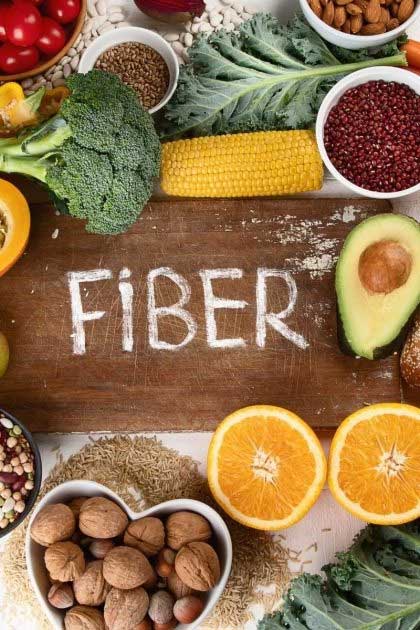
Are you getting enough fiber every day? I don’t mean from a fiber supplement, I’m talking about real whole food. Wondering what foods are high in fiber? Well, there are two types of fiber — soluble and insoluble.
Soluble fiber dissolves in water and is broken down into a sort of gel-like mush in the colon (think oatmeal after you add water to it) and helps slow down digestion. Good sources of soluble fiber are dried beans, oats, citrus fruits, apples, strawberries, peas, and potatoes.
Insoluble fiber does not dissolve in water and remains intact as the food moves through the digestive tract. Some foods high in insoluble fiber are wheat bran, brown rice, couscous, root vegetables like carrots or parsnips, celery, cucumbers, fruits or vegetables with edible seeds, lentils, nuts, and seeds.
It’s a good idea to spread your fiber intake throughout your day. Too much fiber at one time can turn out to be too much of a good thing and the result isn’t pretty — gas, bloating, INDIGESTION! If gas or bloating is a problem, try pureeing, sautéing, steaming, or roasting your veggies.
Also try eating them with healthy fats like avocado, olive, or coconut oil. Spices like ginger, fennel, and caraway seeds can help with digestion too. One type of fiber isn’t better than the other — you really need both soluble and insoluble fiber in your diet. Just get your fiber from quality food sources.
Beta-Glucans
Beta what? Beta-Glucans are a type of soluble fiber found in oats, barley, mushrooms (reishi, shiitake), algae, and seaweed. Should you care? You should care plenty? Beta-Glucans help promote the growth of good bacteria, protect the gut lining, and support the immune system so you can fight off all those bad bugs out there.
Phytochemicals
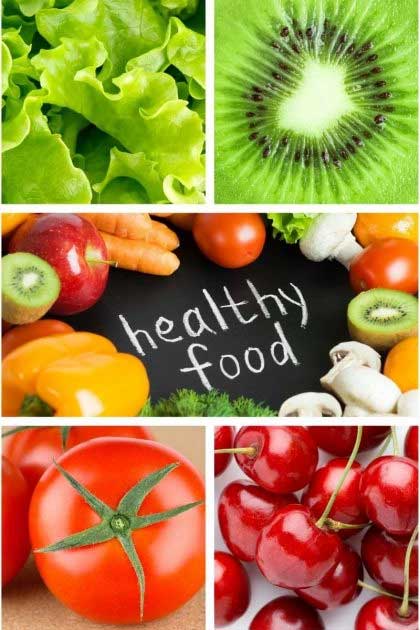
Do you eat a rainbow every day? What I mean is, do you eat foods from every color of the rainbow, or is your diet full of beige, brown, or neon-colored overly processed foods? Brightly colored whole foods are loaded with phytochemicals or polyphenols, which stimulate good bacterial growth and diversity in the gut, as well as decrease inflammation. These are some of the best foods to feed your gut!
Your rainbow foods should include fruits AND non-starchy veggies. Keep your servings of fruit to 1 or 2 per day and try to get the rest of your rainbow from vegetables, herbs, and spices. Limit your starchy vegetables as, like fruits, they count as a carbohydrate due to their sugar content.
Probiotics
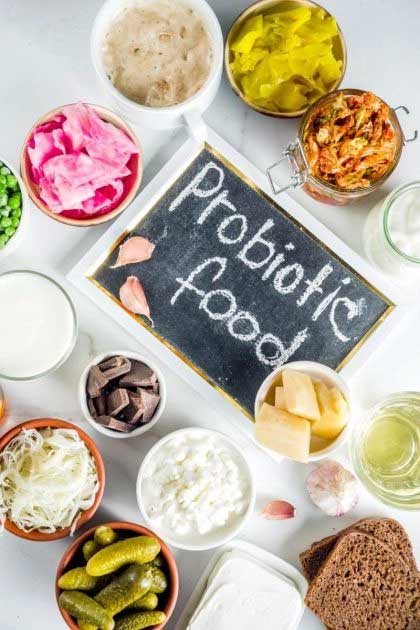
Probiotics are live microbes (the good guys) found naturally in fermented foods. They may also be added to foods or sold in supplement form. Good food sources of probiotics are kimchi, raw sauerkraut, kefir, cultured vegetables, miso, natto, dairy, and nondairy yogurt and cheeses.
Probiotic-rich foods contain good bacteria to help feed the gut and increase short-chain fatty acid (SCFA) production. Why is this important? SCFA are produced by gut bacteria when you consume fermentable fiber and resistant starch. Resistant starch can’t be digested by the small intestine enabling it to arrive intact in the GI tract.
SCFA prevents inflammation in the gut by strengthening the intestinal barrier. Strong gut walls can help keep unfriendly microbes from escaping the gut and moving into your bloodstream.
Probiotic foods also help decrease the production of LPS ( Lipopolysaccharides) which are byproducts of bad bacteria. You don’t want these bad guys around making a mess of your gut, trust me!
Prebiotics
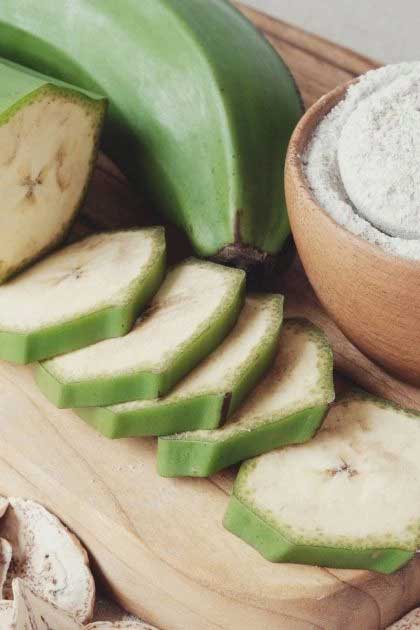
Prebiotics — think resistant starches — are the fuel for probiotics and help your gut maintain a better balance of good bacteria to keep your digestive tract humming along smoothly. Foods rich in resistant starches are potatoes, uncooked oats, Jerusalem artichokes, green bananas, and cooked, cooled pasta.
However, this doesn’t mean you can just load up on pasta and potatoes — pay attention to the portion size you’re eating. They’re still a carb so to balance everything out, pair them with a protein, non-starchy vegetable, and fat. Add prebiotics to your diet slowly along with probiotic food as you want a balance of good bacteria in your gut.
Omega-3 Fatty Acids
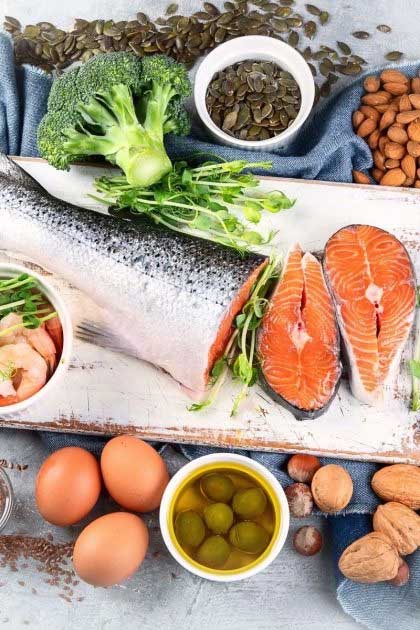
Omega-3 fatty acids are not just good for your heart. They can help improve gut diversity, shore up your intestinal wall integrity, and decrease inflammation. Good sources are walnuts, anchovies, sardines, grass-fed meat, pasteurized eggs, chia seeds, and hemp seeds.
Go for a goal of 1-2 foods rich in omega-3s daily. Quality is super important as omega-3s from healthy animals produce healthy fats. The same goes for veggies — choose organic, non-GMO if possible.
Organic Foods
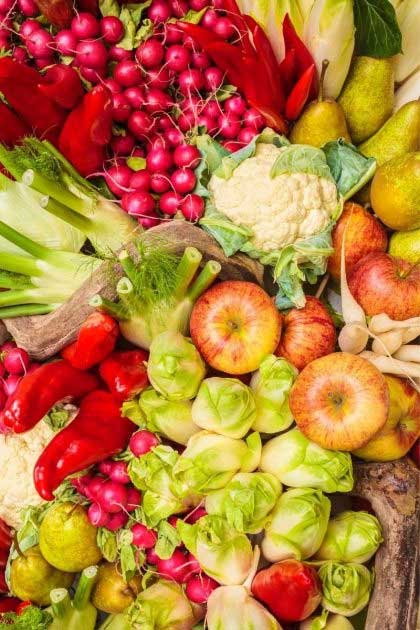
Quality really matters! Pesticides can alter the microbiome of the soil in which foods are grown. If you eat food grown in crappy soil, it may alter your gut microbiome. This is why it’s so critical to buy organic, non-GMO foods if you want a healthy gut!
The easiest way to make sure your body is getting the most nutrients it needs and the least amount of substances that can interfere with nutrient absorption and impair bodily functions is to choose organic or minimally processed foods if organic foods aren’t available.
Don’t waste your time stressing about eating healthy ’cause stress will increase your body’s need for nutrients to clean up your stress mess! Do the best you can and try a few of these money-saving tips:
- Shop for in-season produce at local farmers’ markets
- Join a CSA (Community Support Agriculture)
- Buy frozen organic foods instead of fresh
- Buy in bulk
- Join a buying club like Thrive or Costco
- Use money-saving coupons
Eating organic doesn’t have to break your piggy bank!
Conclusion
A lot goes into making a healthy gut. Eating a healthy diet rich in fiber, prebiotics, probiotics, phytochemicals, and omega-3s will go a long way to improving your microbiome health. Choosing organic whole foods is a better way to get the nutrients your body needs with the least amount of harmful ingredients that can irritate your body, the environment, and other animals.
However, as I said before, you’re not what you eat; you’re what you digest and absorb. Eating a high-quality, healthy diet is only part of the gut puzzle. Stress, medications, sleep, exercise, lifestyle, and disease all play a part in this puzzle.
The body needs every part of the puzzle in place to digest, absorb, assimilate, and eliminate the way it should. If pieces of the puzzle are damaged or missing, then you’re not going to get the best out of all that healthy food you’re eating. Now that you know the best foods to feed your gut, what are your favorites? Leave a comment and let me know!

